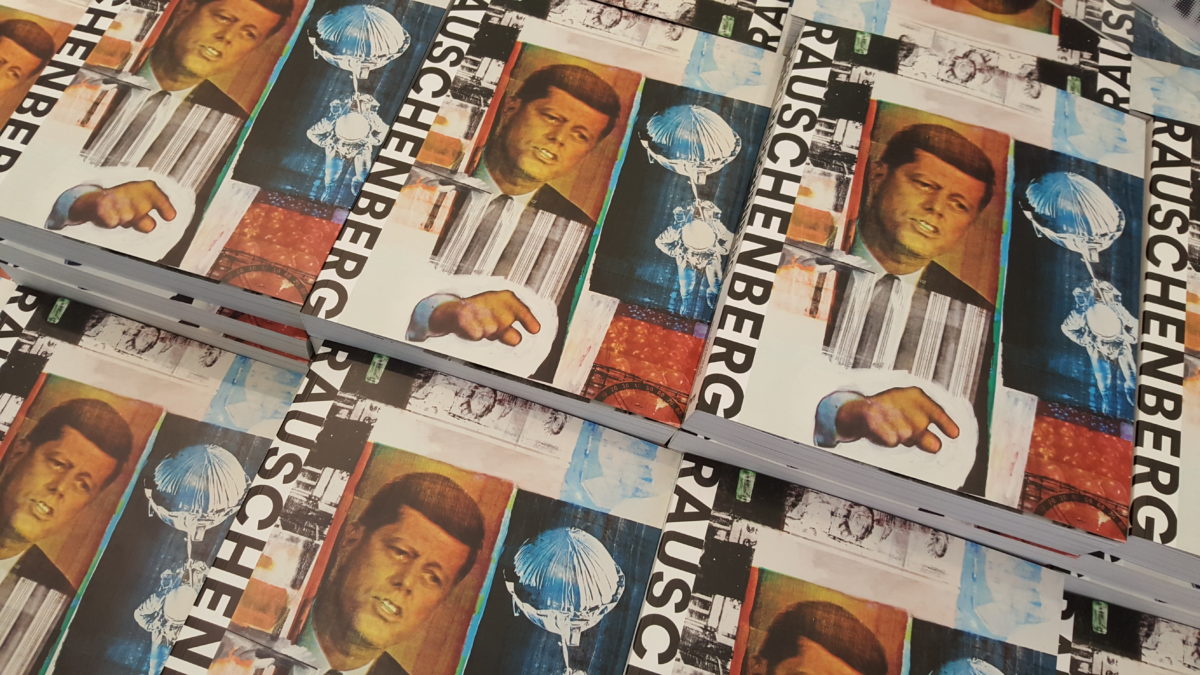Robert Rauschenberg – Tate Modern, London
Artists whose creativity spills out of them – onto canvases, onto objects around them – fascinate me, it’s a reason I have such a soft spot for Jean-Michel Basquiat. It is also a principle behind Robert Rauschenberg’s artistic output, made all the more interesting by the fact that he did not set out on an artistic career until after the G.I. Bill afforded him opportunities to travel and study. The Tate’s retrospective gives weight to the many different tangents and explorations of Rauschenberg’s career, allowing each work or technique to speak for itself without being condensed into a simplified timeline.
As much as I responded to the sheer creativity encapsulated in the Tate show, I also enjoyed Rauschenberg’s playfulness. Each room seems to bring a different exploration of what art can be, and what constitutes an artwork, all with a sense of humour and an emphasis on collaboration. If that is a result of his artistic education as seems to be the case, then all artists should be exposed to music appreciation, dance and other creative outlets. Seeing footage of a collaborative work with the Merce Cunningham Dance Company, in which a set designed by Rauschenberg becomes one of the participants, breathes life back into the similar works hung around it. Like shows of Calder’s work, I found one (perhaps necessary) drawback to be the distance and boundaries between artwork and viewer: Rauschenberg apparently believed the goat and tyre in his 1955-59 work Monogram to be living happily ever after, but I’m not sure he thought they would do so in a Perspex box.
Works like Monogram and Mud Muse, in which a huge vat of mud bubbles and spurts according to the sound it creates, to me make some of the more conceptual artistic movements of the 20th Century more accessible, by providing links and echoes to traditional painting, Pop Art, abstract expressionism, artistic ‘happenings’ and performances, and artistic reappropriation. In fact, I wonder how much of modern art history could be taught using just the Tate exhibition as a framework. Not everything, certainly, but probably a fair amount of the American artistic scene at least, as well as the legacy of YBAs like Damien Hirst and Tracey Emin. I still need to be convinced of the extent to which Rauschenberg “changed American art forever” (as per Tate website), but would happily go and see another major retrospective of his work in future, which I can’t say for all artists.
Last chance, ends 2 April


